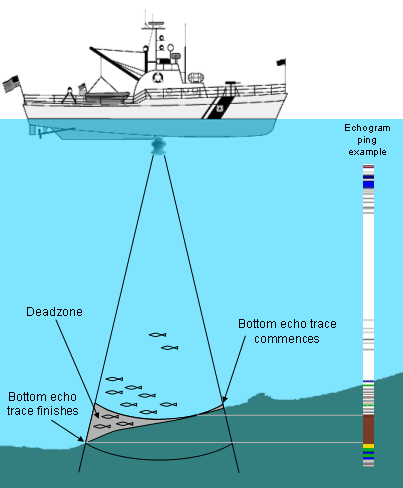About the deadzone
The deadzone (or shadow zone) is an area where biomass within a beam is indistinguishable from the bottom echo (Kloser et al. 1996). The diagram below illustrates the deadzone on a sloping surface (note however, a deadzone exists also on flat bottom surfaces).

Echoview provides the Deadzone estimation operator to enable the estimation of biomass within the deadzone. The operator is based on techniques described in Kloser (1996) and replaces each sample in the deadzone with the average volume backscatter of samples in a layer above the deadzone.
To use this operator you must:
-
define the deadzone using two lines:
-
the acoustic bottom line denotes the start of the bottom echo trace
-
the true bottom line denotes the end of the bottom echo trace as illustrated in the figure above
-
specify the thickness (in meters) of the layer (on the transducer side of the deadzone) from which the average volume backscatter will be calculated
The virtual echogram that is created can be analyzed, with the true bottom as an exclude-below line, to produce biomass estimates which account for the biomass that would otherwise be obscured in the deadzone.
See Ona and Mitson, 1996 for information about alternative methods of estimating biomass in the deadzone.
See also:
Deadzone estimation operator
Deadzone estimation page of the Variable Properties dialog box